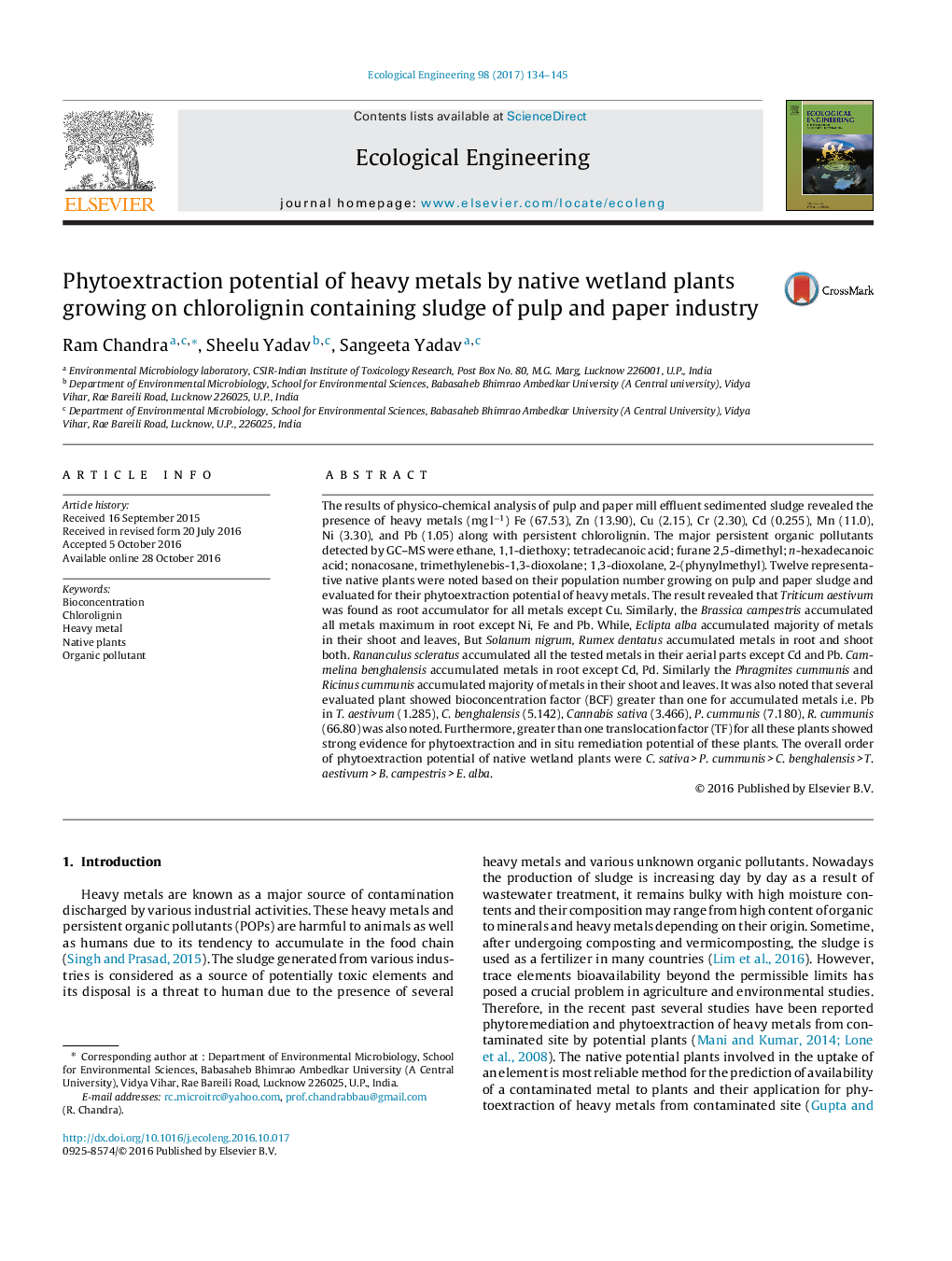| کد مقاله | کد نشریه | سال انتشار | مقاله انگلیسی | نسخه تمام متن |
|---|---|---|---|---|
| 5744063 | 1618001 | 2017 | 12 صفحه PDF | دانلود رایگان |
- Pulp paper waste sludge is a major source of heavy metal and Persistent Organic Pollutants contamination.
- Native plants may act as a tool for in-situ phytoremediation of heavy metals.
- Potential native plants may be a source of health hazards due to hyperaccumulation of heavy metals.
- The detected residual organic compounds are listed under endocrine disrupting chemical (EDC) USEPA, DSP2012.
The results of physico-chemical analysis of pulp and paper mill effluent sedimented sludge revealed the presence of heavy metals (mg lâ1) Fe (67.53), Zn (13.90), Cu (2.15), Cr (2.30), Cd (0.255), Mn (11.0), Ni (3.30), and Pb (1.05) along with persistent chlorolignin. The major persistent organic pollutants detected by GC-MS were ethane, 1,1-diethoxy; tetradecanoic acid; furane 2,5-dimethyl; n-hexadecanoic acid; nonacosane, trimethylenebis-1,3-dioxolane; 1,3-dioxolane, 2-(phynylmethyl). Twelve representative native plants were noted based on their population number growing on pulp and paper sludge and evaluated for their phytoextraction potential of heavy metals. The result revealed that Triticum aestivum was found as root accumulator for all metals except Cu. Similarly, the Brassica campestris accumulated all metals maximum in root except Ni, Fe and Pb. While, Eclipta alba accumulated majority of metals in their shoot and leaves, But Solanum nigrum, Rumex dentatus accumulated metals in root and shoot both. Rananculus scleratus accumulated all the tested metals in their aerial parts except Cd and Pb. Cammelina benghalensis accumulated metals in root except Cd, Pd. Similarly the Phragmites cummunis and Ricinus cummunis accumulated majority of metals in their shoot and leaves. It was also noted that several evaluated plant showed bioconcentration factor (BCF) greater than one for accumulated metals i.e. Pb in T. aestivum (1.285), C. benghalensis (5.142), Cannabis sativa (3.466), P. cummunis (7.180), R. cummunis (66.80) was also noted. Furthermore, greater than one translocation factor (TF) for all these plants showed strong evidence for phytoextraction and in situ remediation potential of these plants. The overall order of phytoextraction potential of native wetland plants were C. sativa > P. cummunis > C. benghalensis > T. aestivum > B. campestris > E. alba.
288
Journal: Ecological Engineering - Volume 98, January 2017, Pages 134-145
